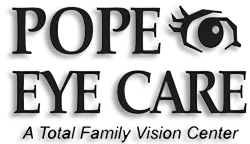
Understanding Your Eyeglass Prescription
Have you ever tried to decipher your eyeglass prescription? Although the numbers and abbreviations written on the script may be meaningless to you, your prescription provides valuable information for the type of corrective lenses you'll need.
What O.D. and O.S Mean
No one may speak Latin anymore, but the language is still used in the medical field. In fact, the first things you'll notice on your prescription are abbreviations for two Latin terms in the column labeled "Rx." Oculus dexter (O.D.) translates to "right eye," while oculus sinister means "left eye." Your optometrist uses these terms to note the prescription for each eye. It's not unusual to have a slightly different prescription in each eye.
Other Measurements and Abbreviations
Eyeglass prescriptions also contain these measurements and abbreviations:
- Sphere. This number determines the lens power needed to provide clear vision for each eye. A minus sign before the number indicates that you are nearsighted, while a plus sign means that you're farsighted. Lens power is measured in diopters. The higher the number, the stronger the prescription. For example, "-5.00" written under sphere means that you are very nearsighted and need a five diopter correction. You may also see diopters expressed in decimals, such as 1.25 or 4.75.
- Cylinder. The cylinder column is only used if you have a common eye condition called astigmatism. The condition occurs if your cornea isn't perfectly round and is shaped like a football instead. The cornea is the clear tissue covering your iris and pupil. An irregularly shaped cornea affects the way light rays reach your retina, distorting your vision. Changing the power in one part of your eyeglass lens will help you see clearly if you have astigmatism. Your eye doctor will note a measurement in diopters in this column.
- Axis. The axis measurement gives information on where to alter the power in the lens to correct astigmatism. Axis numbers range from 0 to 180 degrees.
- ADD. ADD is short for addition. Your eye doctor will use this category to note the additional lens power needed if you wear bifocal, trifocal or progressive lenses. The lenses are often used to improve vision in people who have presbyopia, an age-related vision change that affects the ability to see near objects clearly. Bifocals, trifocals, and progressive lenses are separated into zones that contain separate lens powers, which make it easy to view both far and near objects.
- Prism. The prism column will be blank for many people. Prism lenses may be prescribed if you have double vision caused by conditions that affect the eye muscles, nerves or brain. The lenses bend the light that enters the eye, ensuring that it's focused on your retinas correctly. If you need this type of lens, the prescription will note the amount of prismatic power needed in diopters.
- Pupillary Distance. You may also see pupillary distance (PD) included somewhere on your eyeglass prescription. PD is the distance between the centers of your pupils in both eyes. It's used to ensure that your prescription is correctly centered in your eyeglass lenses.
Has it been a while since you've seen the optometrist? Yearly visits are essential for clear vision and good visual health. Contact us if you're ready to schedule your checkup.
Sources:
All About Vision: How to Read Your Eyeglass Prescription, 7/19
WebMD: How to Read Your Eyeglass Prescription
American Optometric Association: Astigmatism
National Eye Institute: Your Eyes Are the Windows to Your Health
